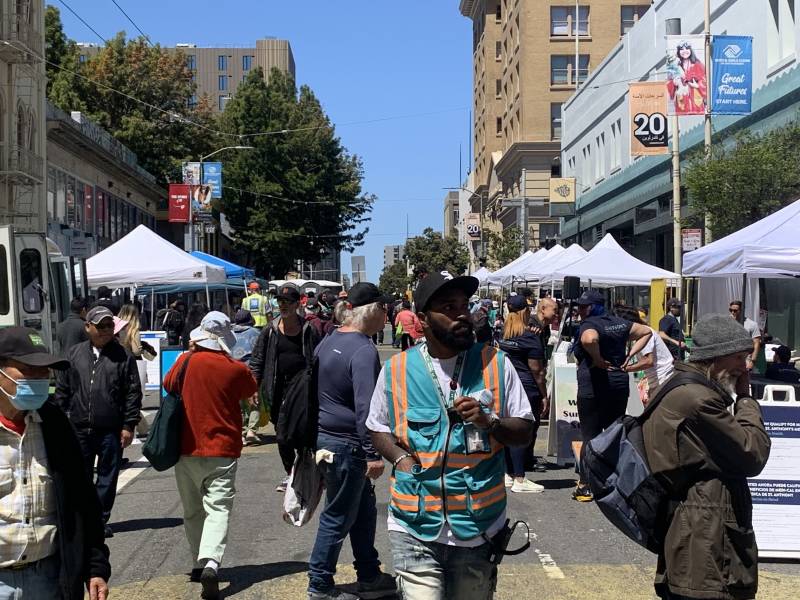The St. Anthony Foundation, which operates on both sides of the avenue between Leavenworth and Jones, has been working with community partners and local leaders for the last four years to make every day feel a little more like a block party on Golden Gate.
In 2020, it closed the road to most vehicle traffic between 6 a.m. and 3 p.m. through the city’s pandemic-era Shared Spaces program, which became permanent in 2023. Earlier this year, St. Anthony re-upped the block’s permit, which closes the road from 6 a.m. to 6 p.m. through January 2025.
District 5 Supervisor Dean Preston, who attended Sunday’s party, said the new parklet, which officially opens June 30, is the second of three planned for the street. The first is on the west end of the block near Leavenworth, and organizers hope the third will go in front of St. Boniface Church. Preston said the parklets are big steps toward the block, becoming a “pedestrian oasis” for the neighborhood.
The long-term goal is for the street — which, along with most streets in the Tenderloin, was included in the San Francisco Department of Public Health’s “high injury network” roadways with the highest concentrations of traffic injuries and deaths in 2022 — to be changed from two lanes to one, closed to most vehicles.
That change could happen in the summer of 2025, Kwan said, with a children’s play area and other open space eventually replacing the second lane.
“We have a lot of kids in the neighborhood — 3,500 — the highest density of children in the city. Just serving a community full of kids, we should probably have some space for them to play,” Kwan told KQED.
“The idea is kids growing up in a neighborhood where they kind of know that that’s part of what it means to be a neighborhood.”
Transforming the Golden Gate Greenway has been a long process, Preston said, partly because of some costly and time-consuming infrastructure changes that come along with reconfiguring a street.
He said that a good amount of the funding has been secured through part of an $8 million United States Department of Transportation grant awarded to the city last December, along with local funding through the San Francisco County Transportation Authority.
“Is it going to happen overnight? No. But are we talking about years and years in the future? We certainly hope not,” Preston said. “We’re doing everything possible to move this along, and I think what you see this weekend was a great example where the street was activated for Sunday Streets and tons of people out there enjoying the block.
“It’s a united community wanting to have a more permanent activation on that block, and it’s really beautiful to see it all coming together.”

